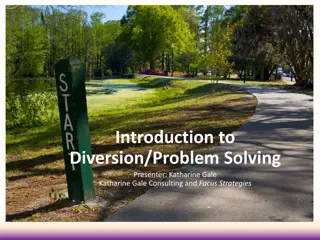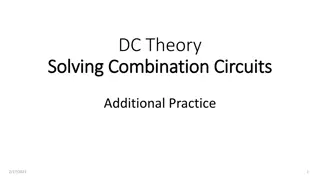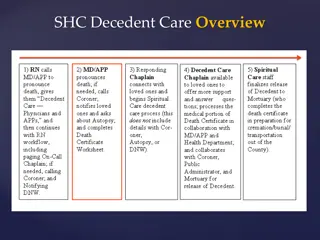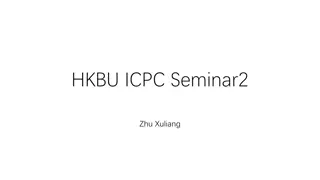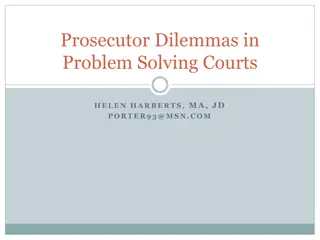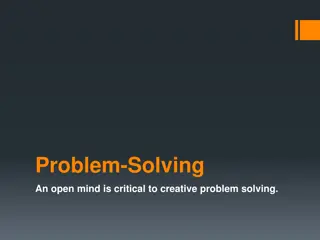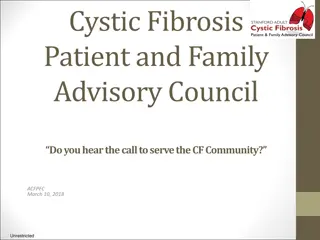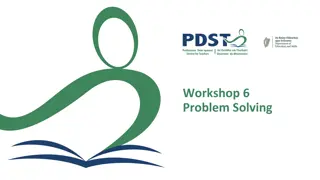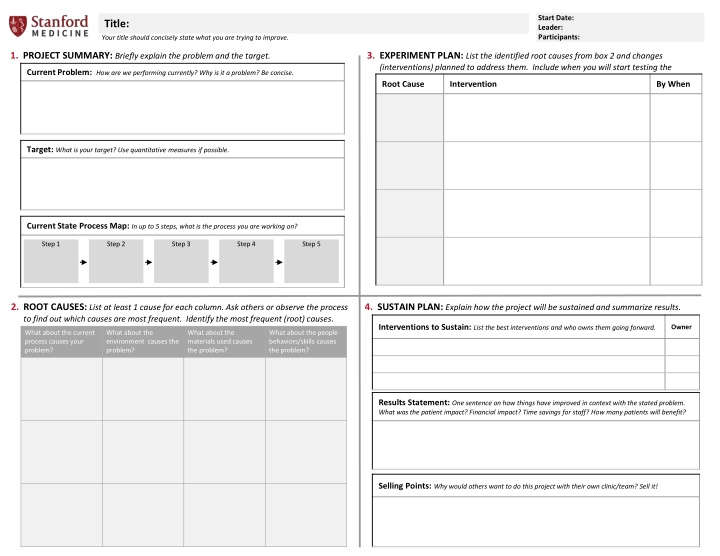
Improving Hypertension Control in Young Adults - Project Summary
Addressing the rising incidence of hypertension in young adults, this project focuses on improving follow-up and blood pressure control among this demographic in Santa Clara. By implementing interventions to enhance patient monitoring and education, the goal is to increase the percentage of controlled hypertensive individuals aged 18-59 from 55.3% to 58% by 4/9/19.
Download Presentation

Please find below an Image/Link to download the presentation.
The content on the website is provided AS IS for your information and personal use only. It may not be sold, licensed, or shared on other websites without obtaining consent from the author. If you encounter any issues during the download, it is possible that the publisher has removed the file from their server.
You are allowed to download the files provided on this website for personal or commercial use, subject to the condition that they are used lawfully. All files are the property of their respective owners.
The content on the website is provided AS IS for your information and personal use only. It may not be sold, licensed, or shared on other websites without obtaining consent from the author.
E N D
Presentation Transcript
Start Date: Leader: Participants: Title: Your title should concisely state what you are trying to improve. 1. PROJECT SUMMARY: Briefly explain the problem and the target. 3. EXPERIMENT PLAN: List the identified root causes from box 2 and changes (interventions) planned to address them. Include when you will start testing the changes. Root Cause Intervention Current Problem: How are we performing currently? Why is it a problem? Be concise. By When Target: What is your target? Use quantitative measures if possible. Current State Process Map: In up to 5 steps, what is the process you are working on? Step 1 Step 2 Step 3 Step 4 Step 5 2. ROOT CAUSES: List at least 1 cause for each column. Ask others or observe the process to find out which causes are most frequent. Identify the most frequent (root) causes. 4. SUSTAIN PLAN: Explain how the project will be sustained and summarize results. Interventions to Sustain: List the best interventions and who owns them going forward. Owner What about the current process causes your problem? What about the environment causes the problem? What about the materials used causes the problem? What about the people behaviors/skills causes the problem? Results Statement: One sentence on how things have improved in context with the stated problem. What was the patient impact? Financial impact? Time savings for staff? How many patients will benefit? Selling Points: Why would others want to do this project with their own clinic/team? Sell it!
Please include any additional material on this slide (documents, pictures, processes, educational material)
Closing Questions 1. Did you meet your goal? It s ok if you didn t. Feel free to expound. Include your response here 2. Will you be closing your project? Continuing? Or spreading to other areas? Include your response here What was your favorite part about doing this project? 3. Include your response here 4. What was the most challenging? Include your response here 5. Share some things your learned about doing improvement work. Include your response here 6. What would you say to others thinking about leading an improvement project? Include your response here
Start Date: 02/05/2019 Leaders/Participants: Neha Narula, Nancy Shin, Gabi Carranza Title: Improving follow-up & BP control in young adults diagnosed with HTN in Santa Clara 1. PROJECT SUMMARY: Briefly explain the problem and the target. 3. EXPERIMENT PLAN: List the identified root causes from box 2 and changes (interventions) planned to address them. Include when you will start testing the changes. Current Problem: How are we performing currently? Why is it a problem? Be concise. Root Cause Intervention By When Hypertension continues to be a major medical diagnosis that currently affects one third of the US adults. While more prevalent in the older population, incidence of HTN is increasing in younger adults. At Stanford Santa Clara, only 55.3% of 18-59 year olds have controlled hypertension, defined by BP < 140/90. Lack of follow up Chart review patients 18-59 with BP >140/90 without follow-up in the past year, to assess if they are still patients of PCSC, remove from PCP panel if indicated. If continuing care at PCSC, schedule f/u PCP visit. MA Target: What is your target? Use quantitative measures if possible.2y Chart review patients with SBP 135-155 seen in past year. Those without follow-up to PCP or PharmD in 4-6 weeks, invite in for MA BP check. At BP check refer to PharmD, or notify PCP and send HTN education video, or schedule follow-up as usual. Our goal is to increase the percentage of controlled 18-59 year old hypertensive population from 55.3% to 58% by 4/9/19, by improving follow-up to appropriate resources. These resources include online education, MA follow-up visits, referral to clinical pharmacy, or MD follow up. Lack of time to come in given work constraints, Lack of interest Online education modules that can be emailed out to patients to review. PharmD Process Map: In 5 steps or less, what is the process you are working on? You don t need to use all 5. Access to BP machine/cuff Use leftover BP cuffs from precision health. Enroll in Virtual HTN pilot PharmD Step 4 Step 2 Step 3 Step 5 Step 1 Patient repeats BP. MA notifies provider of results and PCP refers to PharmD or schedules PCP f/u . Send online HTN ed. Identify patients. Chart review 62 pts with no f/u in past year, remove PCP if pt has moved care or msg pt for f/u with PCP Outreach to largest group to come in for BP check (SBP 135-155). Invite patients in for BP check Re-measure BP after interventions Survey providers re: current practice on barriers, dx and tx of HTN in younger population. Arranging appropriate follow up Categorize into RN/MA blood pressure check, pharmacy referral, follow up with PCP All 2. ROOT CAUSES: List at least 1 cause for each column. Ask others or observe the process to find out which causes are most frequent. Identify the most frequent (root) causes. 4. SUSTAIN PLAN: Explain how the project will be sustained and summarize results. Interventions to Sustain: List the best interventions and who owns them going forward. Owner What about the current process causes your problem? What about the environment causes the problem? What about the materials used causes the problem? What about the people behaviors/skills causes the problem? Schedule BP recheck appt during PCP visit PCP/MA Continue BP recheck appts on Injection Clinic schedule MA/Clinic MA has little time in current environment Less interest/ investment in BP control No follow up on patients Continue MA BP workflow to schedule followup with providers Inj. Clinic MA Access to BP cuff Results Statement: One sentence how things have improved in context with the stated problem. What was the patient impact? Financial impact? Time savings for staff? How many patients will benefit? Distraction in visits; other medical needs We improved control of patients 18-59 that were identified of having elevated blood pressures from 55.3% to 57.6%, by increasing access to BP followup visits and streamlining MA workflow to improve PCP followup and referral to Pharmacy. Low awareness on importance Patient s lifestyles Selling Points: Why would others want to do this project with their own clinic/team? Sell it! Patients are reluctant to treat disease they are asymptomatic to Developing hypertension at an earlier age is associated with greater risk of CV death. Therefore, it is crucial identify, educate and aggressively treat our younger hypertensive patients (ages 18-59) to potentially reduce CV complications. No process for BP recheck

